How to fix low volume of Style, Song or Groove Creator on Yamaha PSR-E463 Electronic Keyboard?
- JJames SmithSep 9, 2025
Check the volume setting in the Functions.
How to fix low volume of Style, Song or Groove Creator on Yamaha PSR-E463 Electronic Keyboard?
Check the volume setting in the Functions.
Why does the voice sound different on each note of my Yamaha PSR-E463?
This is normal. The tone generation method uses multiple recordings (samples) of an instrument across the range of the keyboard; thus, the actual sound of the Voice may be slightly different from note to note.
Why does my Yamaha PSR-E463 make a popping sound when turned on or off?
This is normal and indicates that the Yamaha Electronic Keyboard is receiving electrical power.
Why doesn't the ACMP indicator light up on my Yamaha Electronic Keyboard?
Check the on/off status of the [STYLE] lamp. When using a Style, press the [STYLE] button to turn on the [STYLE] lamp.
Explains MIDI, XG Lite, USB, and Style File formats for compatibility.
Lists all items included with the instrument package.
Instructions for attaching the music rest to the instrument.
Details on the owner's manual and online documentation.
Overview of all physical controls and connectors on the instrument.
Information on using AC adapters and batteries for power.
Steps to power the instrument on and off.
How to control the overall sound output volume.
Configuration for automatic power shutdown to save energy.
Instructions for safely placing the instrument on a stand.
Fundamental operations and understanding the instrument's display.
Exploring and using different instrument sounds like Main, Dual, and Split.
How to use the metronome and adjust tempo for practice.
Applying harmony effects and synchronizing arpeggios.
Applying digital signal processing effects to enhance sound.
Using control knobs to customize sounds and effects.
Selecting and playing accompaniment Styles.
Listening to and playing along with preset and user songs.
Using the Groove Creator for rhythmic patterns and DJ-like performances.
Sampling sounds from external devices and managing them.
Capturing musical performances as user songs.
Playing and recording audio files to USB flash drives.
Saving and recalling panel settings for quick access.
Connecting headphones, pedals, and external audio devices.
Managing instrument data and restoring factory settings.
Useful features for enhancing performance, like effects and pitch controls.
Adjusting tuning and creating custom scales.
Customizing Main, Dual, and Split Voices.
Synchronizing and holding arpeggio playback.
Details on parameters controllable by the Live Control Knobs.
Configuring Styles, Grooves, tempo, and chord recognition.
Managing background music playback and song parameters.
Comprehensive guide to instrument parameters and settings.
Solutions to common problems and issues encountered with the instrument.
Technical details and features of the instrument.
Explains MIDI, XG Lite, USB, and Style File formats for compatibility.
Lists all items included with the instrument package.
Instructions for attaching the music rest to the instrument.
Details on the owner's manual and online documentation.
Overview of all physical controls and connectors on the instrument.
Information on using AC adapters and batteries for power.
Steps to power the instrument on and off.
How to control the overall sound output volume.
Configuration for automatic power shutdown to save energy.
Instructions for safely placing the instrument on a stand.
Fundamental operations and understanding the instrument's display.
Exploring and using different instrument sounds like Main, Dual, and Split.
How to use the metronome and adjust tempo for practice.
Applying harmony effects and synchronizing arpeggios.
Applying digital signal processing effects to enhance sound.
Using control knobs to customize sounds and effects.
Selecting and playing accompaniment Styles.
Listening to and playing along with preset and user songs.
Using the Groove Creator for rhythmic patterns and DJ-like performances.
Sampling sounds from external devices and managing them.
Capturing musical performances as user songs.
Playing and recording audio files to USB flash drives.
Saving and recalling panel settings for quick access.
Connecting headphones, pedals, and external audio devices.
Managing instrument data and restoring factory settings.
Useful features for enhancing performance, like effects and pitch controls.
Adjusting tuning and creating custom scales.
Customizing Main, Dual, and Split Voices.
Synchronizing and holding arpeggio playback.
Details on parameters controllable by the Live Control Knobs.
Configuring Styles, Grooves, tempo, and chord recognition.
Managing background music playback and song parameters.
Comprehensive guide to instrument parameters and settings.
Solutions to common problems and issues encountered with the instrument.
Technical details and features of the instrument.
| Bit rate | 16 bit |
|---|---|
| Pitch wheel | Yes |
| Product type | Digital synthesizer |
| Sample rates | 44.1 - 44.1 kHz |
| Product color | Black |
| Sound effects | Harmony, Chorus, Equalization, Flanger/Digital Signal Processing (DSP), Reverberation |
| Volume control | Rotary |
| RMS rated power | 12 W |
| Number of speakers | 2 |
| Sound effects quantity | 59 |
| Chorus effects quantity | 5 |
| Keyboard number of keys | 61 |
| Maximum polyphony (notes) | 48 |
| Reverberation effects quantity | 12 |
| Headphone outputs | 1 |
| DC input voltage | 12 V |
| Power source type | DC |
| Display type | LCD |
| Depth | 404 mm |
|---|---|
| Width | 946 mm |
| Height | 139 mm |
| Weight | 6600 g |
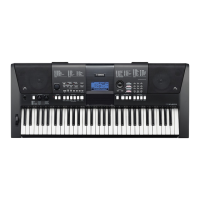
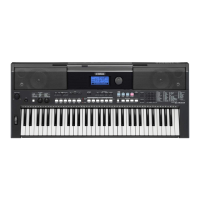
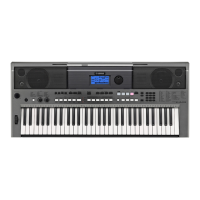
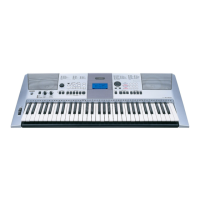
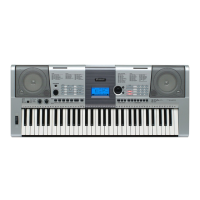
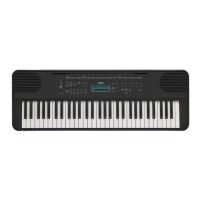
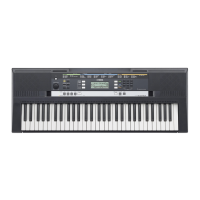
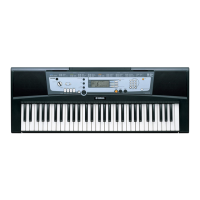

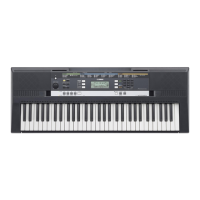
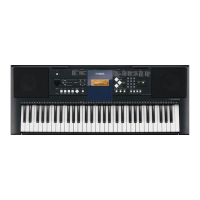
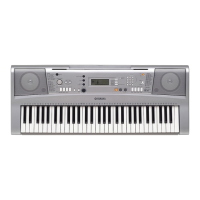
